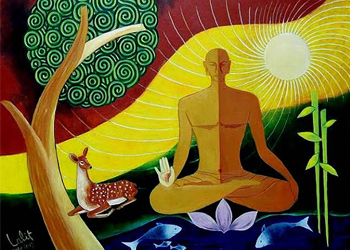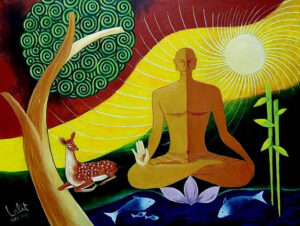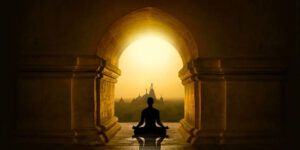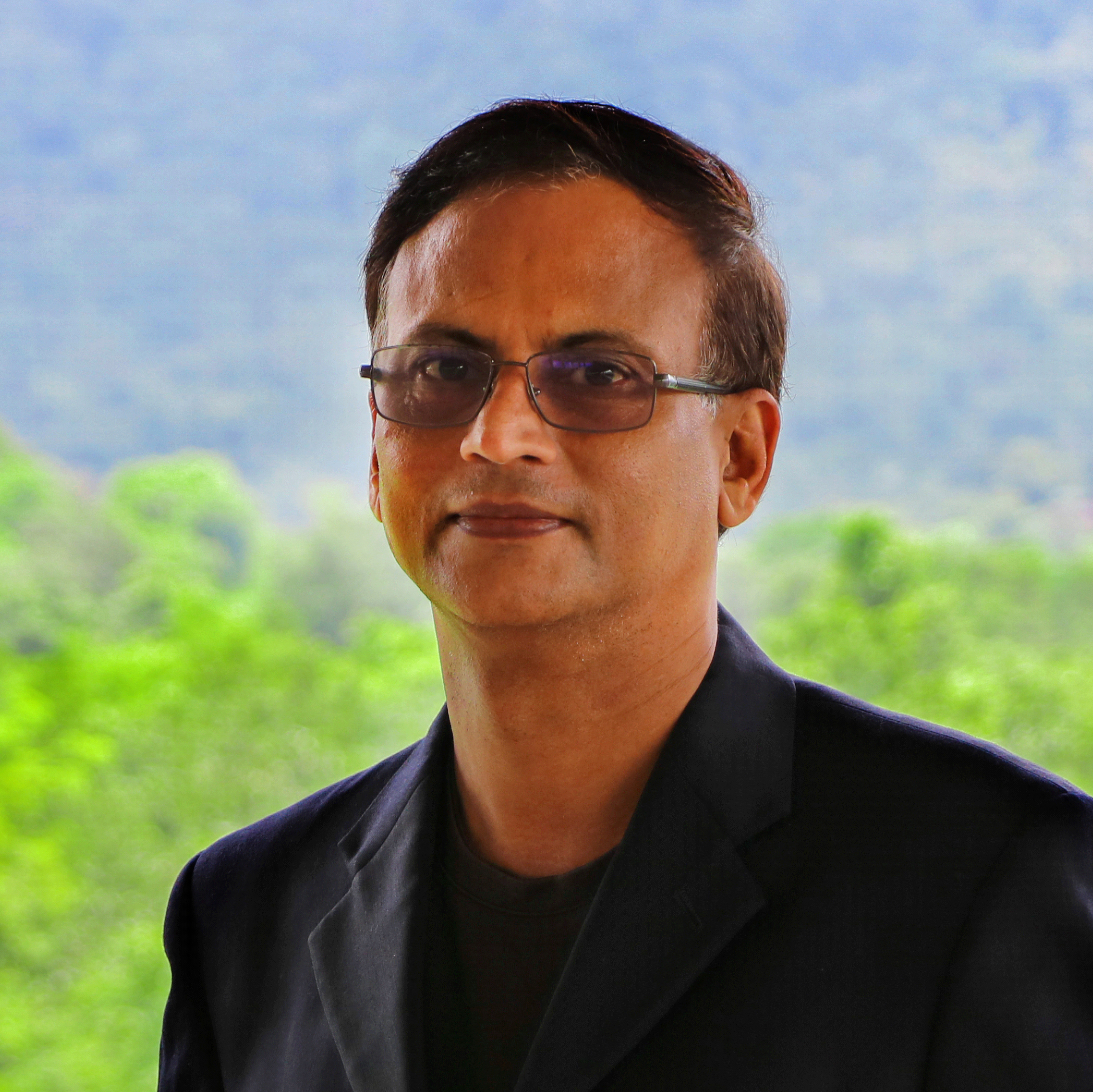Some Comparative Themes of Dharma and Religion
1. Multiplicity of Adherence of Faiths
Surveys have indicated that more than 75 percent of Japanese consider themselves both Shinto and Buddhists. A famous Japanese saying is “Born Shinto, Die Buddhist,” meaning the Japanese life-cycle rituals are inspired by Shinto, whereas Buddhism inspires the death rites. Similarly, the Chinese people can visit a Buddhist temple, live life inspired by Daoist ideals, worship ancestors, and at the same time philosophize based on Confucianism. The situation is similar in India. A Jain can visit a Jain temple with the same devotion as (s)he worships Laxmi and Ganesha, especially on the Diwali festival. Sarasvati is another example of a pan-Indian goddess of knowledge. Similarly, in Punjab, a Sikh can visit Gurudwara with the same zeal as he chants or writes Jai Mata Dee at the back of his truck. This simultaneous practice of several Asian traditions is possible because they are not “religions” in the Western sense.
2. Polycentrism
There are 33 Koti deities in Hinduism, 24 Tirthankaras in Jainism, and 10 Gurus in Sikhism in India. Thus, the centers of one’s prayer or ritual can be multiple instead of one figure. Similarly, in China, there are thousands of gods and saints. In Japan, there are infinite numbers of Kamis (gods). Again, this polycentric phenomenon is improbable in Western religions.
3. Transmigration
In India, all the philosophies consider time and the universe cyclical instead of linear, unlike Western religions. One can attain a better or worse next birth based on one’s karma in the past birth. This notion is a uniquely dharmic notion not found in the Western sense of “religion.”
4. No Sacred/Profane Dichotomy
In Western religions, “sacred” is seen as distinct from “mundane.” But in Asian tradition, dharma pertains to everyday life in addition to visiting sacred places. One’s entire life needs to be changed, including dietary habits, to practice Jainism. Thus, there is no separate category of “religion” as distinct from daily life.
5. No “Organized” Religion
Western religions are organized around the pope or sharia. However, in India, in every age, new thinkers have challenged and reinterpreted the traditions in innovative ways; thus, no single tradition could emerge as one state religion. Similarly, in China, Buddhism was rarely a state religion, and in Japan, Shinto was a state religion only from 1889 to 1946.
6.” Mythistory,” not History
Indian traditions trace their origins to prehistoric times. The historicity of the 24 Tirthankaras in Jainism or of Rama or Krishna in Hinduism is not as critical as the historical events in Western religions. Similarly, in Japan, it is popularly believed that Izanagi and Izanami created Japan and other Kamis. In China, the Daoist texts have no historical writer. However, in Western religions, the Exodus of Moses, the Crucifixion of Jesus Christ, and the Hijra of Mohammad are centrally important.
7. Texts
In the Western context, one holy text such as Torah, Bible, or Quran is central to the religion. In the Indian context, we have multiple Jain Agamas and Vedas, Upanishads, Puranas in Hinduism. In China, there are two Taoist and five Confucianist texts. In Japan, again, there is more than one Shinto text.
8. Religious Rivalry
In India, polemic debates among several philosophies of Hinduism, Buddhism, and Jainism have rarely turned into violent wars and battles as in Western religions. In Japan, as we saw above, Buddhism existed with Shinto. Similarly, in China, for most periods, Buddhism co-existed harmoniously with Daoism and Confucianism. However, Western history has several incidences of Crusades, jihads, and anti-Semitism.
Conclusion
From these eight above themes, we can now conclude that Jainism and other Asian traditions should be referred to as dharmic traditions instead of calling them ‘religion.’
(The writer is the Head of Humanities & Language and Chair of the India Centre, at FLAME University, views expressed are personal)





Well written and really helpful to better understand Dharma vs Religion. Religion is a western world reference.
Awesome! Its genuinely remarkable post, I have got much clear idea regarding from this post